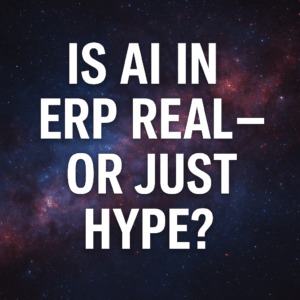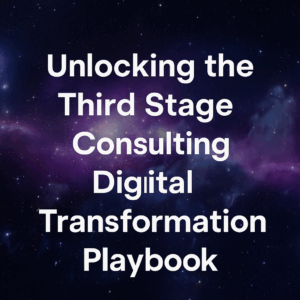Executives and project teams have a lot of issues and curveballs to navigate as they define their digital strategies for 2020.
Whether you are considering ERP, CRM, HCM, cloud, on-premise, AI, industry 4.0, internet of things, predictive analytics, asset management, or any other set of technologies, the decision process can be overwhelming. This is true even if you are considering one of the top ERP systems in the market.
But you will succeed in your efforts if you focus on this one thing: your business.
Table of Contents
ToggleChallenges with digital strategies and ERP implementations in 2020
It may sound like a no-brainer, but too many project teams get tangled up in various pitfalls along the way. For example, the planning, decision, and execution process is riddled with landmines such as these:
- ERP vendors have perpetuated a number of biases and hoaxes that can complicate the decision-making process
- Several of the leading cloud ERP systems are not yet ready for primetime, but they are still being pushed out to the marketplace
- Evaluating SAP S/4HANA vs Oracle ERP Cloud vs. Dynamics 365 other ERP systems can be overwhelming
- Systems integrators, ERP consultants, and other industry players are subjecting their clients to their own biases
- ERP implementations continue to fail at a high rate – something that has not improved despite big advances in technologies
These and other challenges are further explained in our top digital transformation and ERP predictions for 2020.
How to simplify your digital strategy
Despite these challenges, there is one way to ensure success: drown out the industry biases and noise. Focus on your business needs and use that to dictate your digital strategy – not the other way around.
For example, suppose you are trying to decide whether or not to implement a canned, single ERP system versus a best of breed solution with multiple systems. Top ERP vendors and systems integrators may try to convince you that a single ERP system is the absolute best way to go. They may even say something crazy like “it’s best practice” or “leading organizations are doing it.”
But don’t buy that bias for a minute. Their economic best interest is for you to buy one single ERP system from them. It may or may not be the right answer for you, but their recommendations have nothing to do with your best interests.
Instead, we need to get back to the basics of our business strategy to answer decide what is best for us. For example, our team and I facilitate discussion questions like these in helping guide our clients to the “right” answer for them:
- How important is flexibility vs. scale to your business model?
- What are you internal IT competencies, and what would you like them to be in the future?
- How does this all align with and support your corporate strategy and objectives – or does it?
- How big of a change are we really willing to make as part of our transformation?
- How much time and money are we willing to invest?
- What is our risk tolerance as an organization?
- How will organizational change management need to support our answers to these and other questions?
These are just a few of the plethora of questions and answers that we use to guide our clients to the digital strategy that is most aligned with their big picture direction. This video unpacks the process for defining your digital and ERP strategy in a bit more detail:
Don’t forget about alignment between your digital strategy and your overarching company strategy and goals
I’m surprised by how many organizations define their digital strategies and ERP implementations in a vacuum without considering or aligning with their overarching company strategies and goals. This is one of the top reasons why ERP implementations fail, yet most companies fail to recognize this root cause.
Below is a visual overview of the process we guide our clients through to help them align on their digital and ERP strategies for 2020 and beyond. It is an interactive, educational, and iterative process that helps the team gain clarity on where they would like to take their digital initiatives.
(Please feel free to contact me if you would like to walk through this process in more detail.)
Conclusion: There is no one-size-fits all digital and ERP strategy
Though many in the industry are selling definitive and absolute solutions, there is no one-size-fits-all answer. Despite these unwavering attempts to force a square peg into a round hole, it is important to define the ERP strategy that makes the most sense for your business in 2020 and beyond.
This blog and the embedded videos just scratch the surface of the various strategic variables that will help your team align on the best digital strategies for you. This exercise is probably my favorite part of the consulting we do, so please feel free to contact me to brainstorm ideas on how you might apply this framework to your business. I am happy to be an informal sounding board as you continue on your digital transformation journey in 2020 and beyond!





